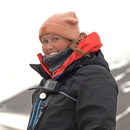After several days wrapped in thick, unrelenting fog, we finally woke to a crystal-clear morning. The air felt fresh, the light bright and full of promise. We were sailing through Murchisonfjorden, weaving our way between the islands, with one goal in mind: to set foot on Nordre Russøya for a walk to stretch our legs.
But before we could even drop anchor, some light “dots” on the mainland of Nordaustlandet caught our attention. Not one, but two polar bears lay far inland, high on the slopes, fast asleep. They were far too distant for a clear view, the sort of sighting we affectionately call a “pixel bear” when seen through the binocular lens.
Still, with the sun shining and visibility perfect, we decided to scout around the island and proceed with our landing, keeping the sleeping bears carefully in view from a safe distance.
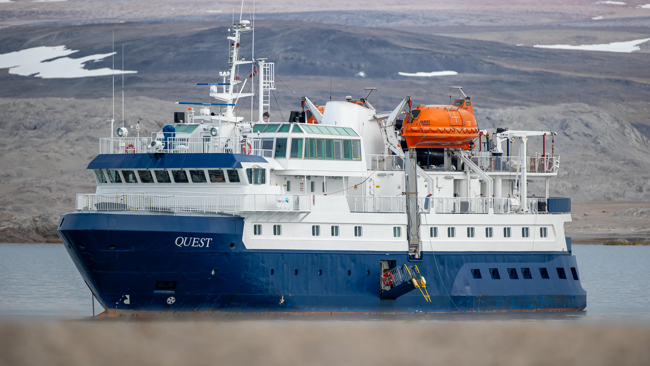
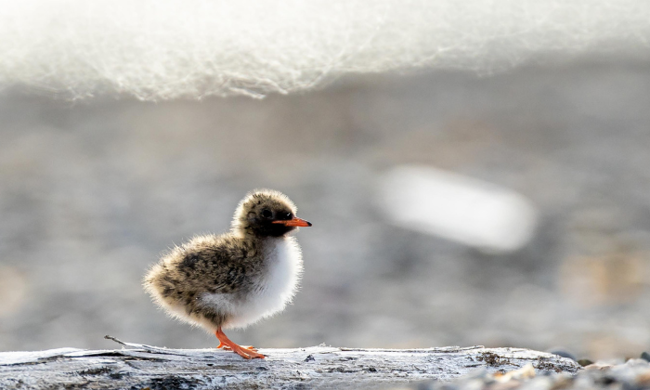
Nordre Russøya is a paradise for bird photography. Great skuas, Arctic terns, and red-throated divers are regular residents here, especially around the island’s lakes.
This time of year is particularly magical. The Arctic tern chicks have just hatched, tiny balls of fluff darting between the rocks. It’s a delight to watch, and even better to photograph. We decided to form a dedicated photography group for those eager to capture these special moments, while other guests set off on two walks: one circling the entire island, and a shorter route that would turn back halfway.
The island also holds a piece of Arctic history. Here stands one of only two original Pomor crosses still in existence in Svalbard, the other resting a short distance away on Crossoya.
The Pomors were Russian hunters and traders from the White Sea region, who began venturing into the Arctic in the 18th century. Skilled seafarers, they came in sturdy wooden vessels to hunt walruses and polar bears, trap Arctic foxes, and fish for cod, enduring months in the harsh polar climate. Their presence left traces in the landscape: above the beach on Nordre Russøya, you can still find the remains of a Pomor dwelling, its red bricks once forming the oven that kept them warm through the endless polar night. Nearby lies the weathered lower jawbone of a sperm whale, a reminder of the great animals that have always drawn humans to these icy waters
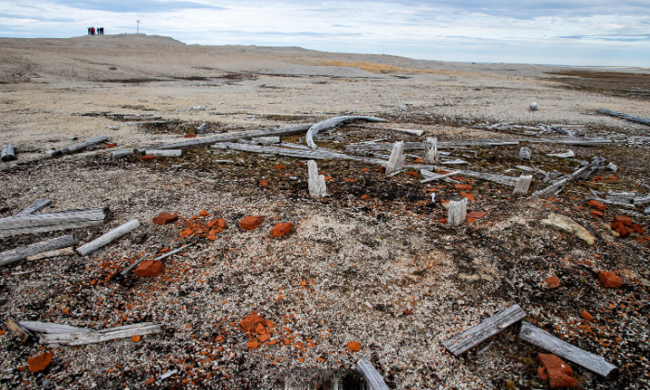
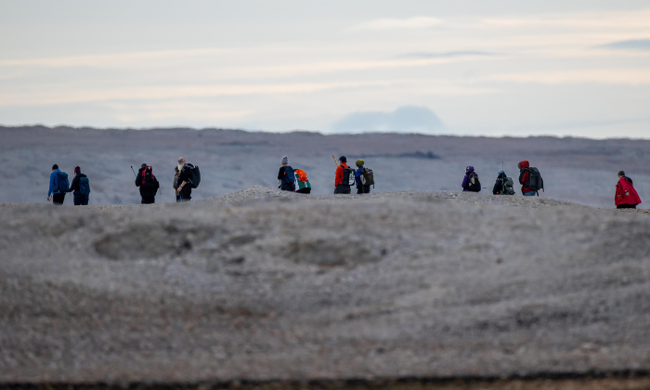
The long-walk group began by heading north to visit the cross. While the island’s terrain is generally open, reaching the southern tip required some careful navigation, not because of cliffs or rocks but because of the island’s winged inhabitants. The Arctic terns were fiercely protective of their chicks, and the great skuas patrolled their territories with equal determination. In the end, we took a wide detour to avoid disturbing their nesting grounds. At the southern tip, the ground told stories of another animal entirely: scattered bones and skulls of walruses, remnants from hunts in centuries past. Here too, the terns greeted us with sharp calls and daring swoops.
On the way back toward the landing site, we paused to listen to the rhythmic crash of waves against the shore, while Arctic terns mobbed a great skua overhead. Along the beach, the tide had left behind a treasure trove of shells and sea urchins, a small reminders of the rich life hidden beneath the Arctic waters. It was one of those days in Svalbard when the elements, wildlife, and history all came together, leaving us with the deep, quiet satisfaction that only the High Arctic can give.
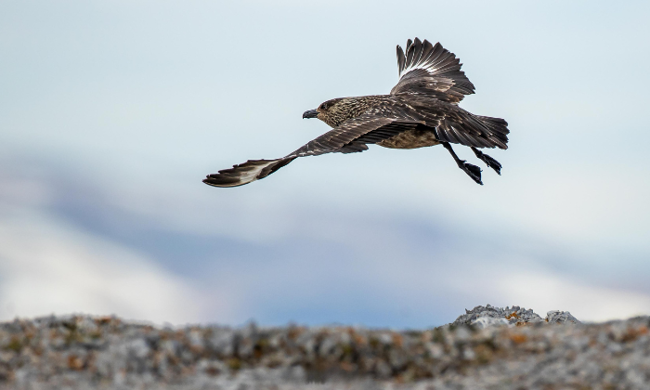
Please note: Depending on the lens used for a photo or video shot an animal may appear to be closer than it is. We always follow strict wildlife guidelines to ensure that we do not cause any disturbance.





